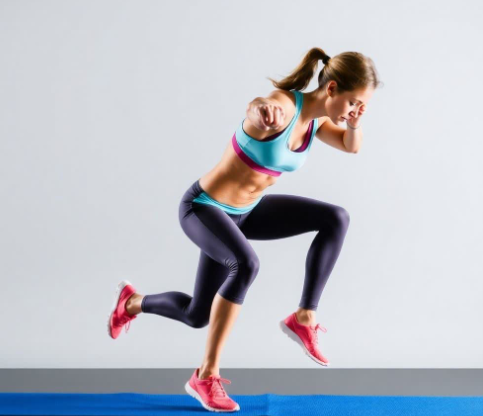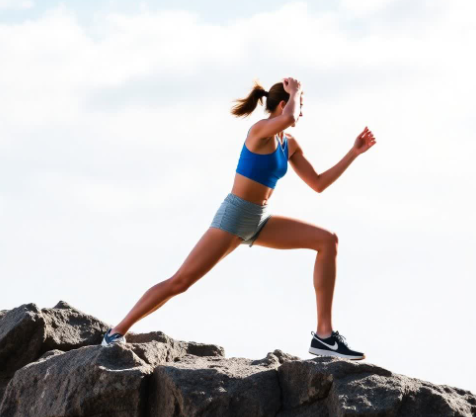"Transform Your Walk: 5 Fitness-Boosting Techniques (Fartlek, Rucking, Silent Walk & More)"
(Source: The Guardian, by Liz Connor)
Introduction: Walking's Resurgence in the Digital Age
After years dominated by high-intensity fitness trends, the humble act of walking has made a remarkable comeback, largely propelled into the spotlight by platforms like TikTok. Social media users are increasingly swapping grueling HIIT workouts for the simpler, yet profoundly effective, goal of reaching their 10,000 daily steps. While walking has been fundamental to human existence, its numerous benefits, from promoting healthy weight loss and improving cardiovascular fitness to reducing stress and enhancing sleep, are now gaining renewed recognition. Scientific studies further underscore its significance, revealing a direct correlation between daily step count and all-cause mortality, suggesting that regular walking could significantly extend one's lifespan.
Beyond the casual park stroll with a coffee, however, lies a diverse world of walking styles, each offering distinct fitness advantages. This article explores five unique approaches to walking, tailored to specific health and fitness goals, proving that lacing up your shoes can lead to a surprisingly varied and effective workout.
1. Nordic Walking: Upper-Body Power and Stability
Best for: Upper-body gains and enhanced stability.
Originally conceived as a summer training regimen for cross-country skiers, Nordic walking has evolved into a popular exercise method in its own right, particularly gaining traction among older populations. This outdoor activity resembles regular walking but incorporates two specially designed long poles, held in each hand and planted into the ground in sync with your stride.
The benefits extend beyond mere stability:
· Full-Body Engagement: The use of walking poles actively engages muscles in the arms, shoulders, and core, transforming a standard walk into a more comprehensive, full-body workout.
· Increased Muscular Strength: A 2013 study specifically highlighted that consistent Nordic walking led to greater improvements in upper-body muscular strength compared to conventional walking, demonstrating its unique advantage for targeted development.
2. Fartlek Intervals: Time-Efficient Cardiovascular Boost
Best for: Maximizing fitness on a tight schedule and improving cardiovascular health.
Despite its unusual, almost comical name (Swedish for "speed play"), Fartlek walking offers powerful benefits within a low-stakes training style. This method involves intentionally varying the pace and intensity of your walks, interspersing bursts of faster walking with periods of slower, more gentle strolling to recover.
Similar to interval training in running, research published in the journal Applied Physiology, Nutrition, and Metabolism found that alternating between fast and slow walking paces can significantly.
· Improve Cardiovascular Fitness: Enhancing the efficiency of your heart and lungs.
· Help Control Blood Sugar Spikes: Aiding metabolic regulation.
· Enhance Overall Physical Function: Contributing to better daily movement and performance.
Crucially, researchers emphasize that this movement pattern is particularly advantageous for individuals with busy lifestyles, offering a time-efficient way to reap the substantial benefits of a longer, more leisurely walk within a compressed timeframe.
3. Rucking: Building Muscle and Boosting Weight Loss
Best for: building strength, sculpting the upper body, and enhancing weight loss.
"Rucking," a military-inspired exercise, is gaining considerable traction in the wellness sphere, endorsed by prominent figures like podcaster Andrew Huberman and longevity expert Dr. Peter Attia. This method involves intentionally carrying a weighted backpack during walks, adding significant resistance to your movement.
Rucking's primary unique selling proposition (USP) lies in its ability to:
· Build Muscular Strength: The added resistance actively strengthens the muscles involved in walking, including those in the legs and core.
· Sculpt Shoulders and Back: Carrying weight directly engages the muscles of the upper back and shoulders, contributing to increased definition and strength in these areas.
· Enhance Fat Loss: One study reported an impressive extra three pounds of fat loss over three weeks in participants who incorporated weighted walking compared to those who did not, indicating its potential as a powerful tool for body composition changes.
4. 6-6-6 Walking: Longevity and Outdoor Vitality
Best for: Promoting longevity and harnessing the benefits of outdoor exercise.
Following the trend of numerical workouts, the "6-6-6 walking challenge" involves walking for 60 minutes at either 6 AM or 6 PM, bookended by a 6-minute warm-up and cool-down. This challenge directly counters the common social media message that high-intensity gym workouts are the sole path to fitness benefits.
Scientific evidence supports this simpler, more accessible approach:
· Extended Lifespan: A recent study indicated that 160 minutes of walking per day can be so beneficial for individuals over 40 that it may add an extra five years to their lives, underscoring walking's profound impact on longevity.
· Increased Vitality: Studies also show that adults who walk outdoors report greater vitality and energy compared to those who stick to indoor treadmills, highlighting the unique psychological and physiological advantages of being in nature.
5. Silent Walking: Cultivating Mental Well-being and Mindfulness
Best for: Reducing stress, enhancing mindfulness, and improving mental health.
In an age saturated with digital media, the act of walking without headphones or phone calls has emerged as a refreshing trend on TikTok: "silent walking." The concept is elegantly simple: leave your phone securely in your pocket and immerse yourself fully in your surroundings.
This slow-paced, deliberate approach is designed to:
· Ground You in the Present: By tuning into the sights and sounds of your environment, you can fully engage with the present moment.
· Manage Thoughts and Feelings: This practice helps you observe and process your internal experiences without being overwhelmed by them.
Essentially, silent walking is a dynamic form of moving mindfulness, a meditation concept strongly supported by scientific research as an effective balm for stress, anxiety, and depression. Its positive ripple effects extend to improved sleep, enhanced mood, and bolstered immune function, making it a powerful tool for holistic well-being.
Conclusion: Lacing Up for a Richer, Healthier Life
The resurgence of walking as a fitness trend signals a refreshing shift towards more accessible and sustainable forms of exercise. As demonstrated by these five distinct styles—Nordic Walking, Fartlek Intervals, Rucking, 6-6-6 Walking, and Silent Walking—the humble act of putting one foot in front of the other offers a surprisingly diverse array of benefits, targeting everything from upper-body strength and cardiovascular health to mental clarity and longevity. By understanding these varied approaches, individuals can tailor their walking routine to their specific fitness goals, proving that the low-impact bandwagon can indeed lead to peak fitness and a more enriched, healthier life.
Labels: "Transform Your Walk: 5 Fitness-Boosting Techniques (Fartlek, Rucking, Silent Walk & More)"





